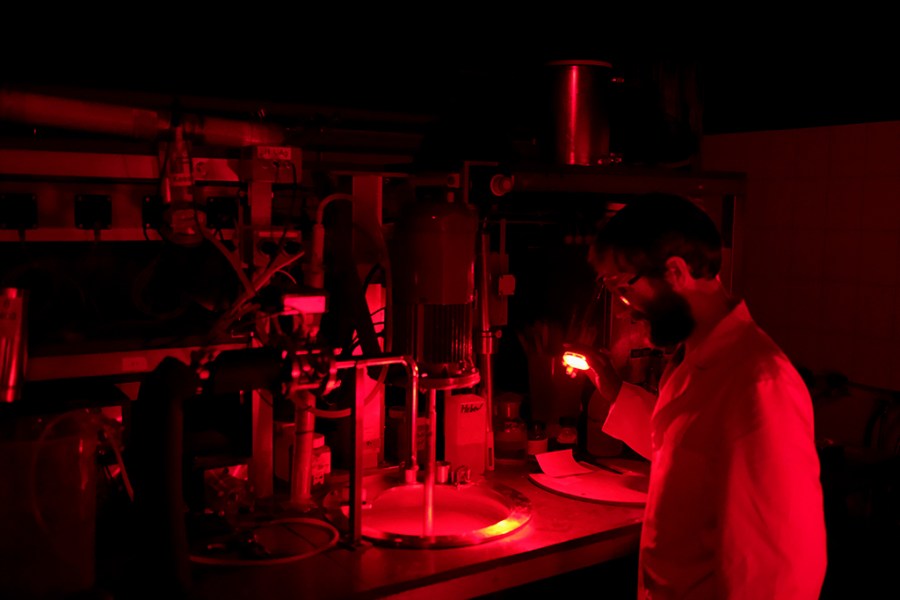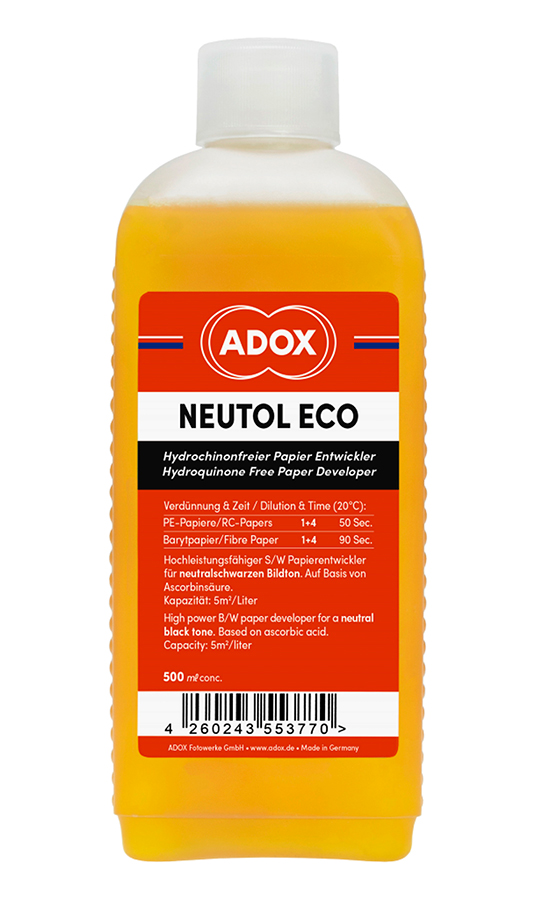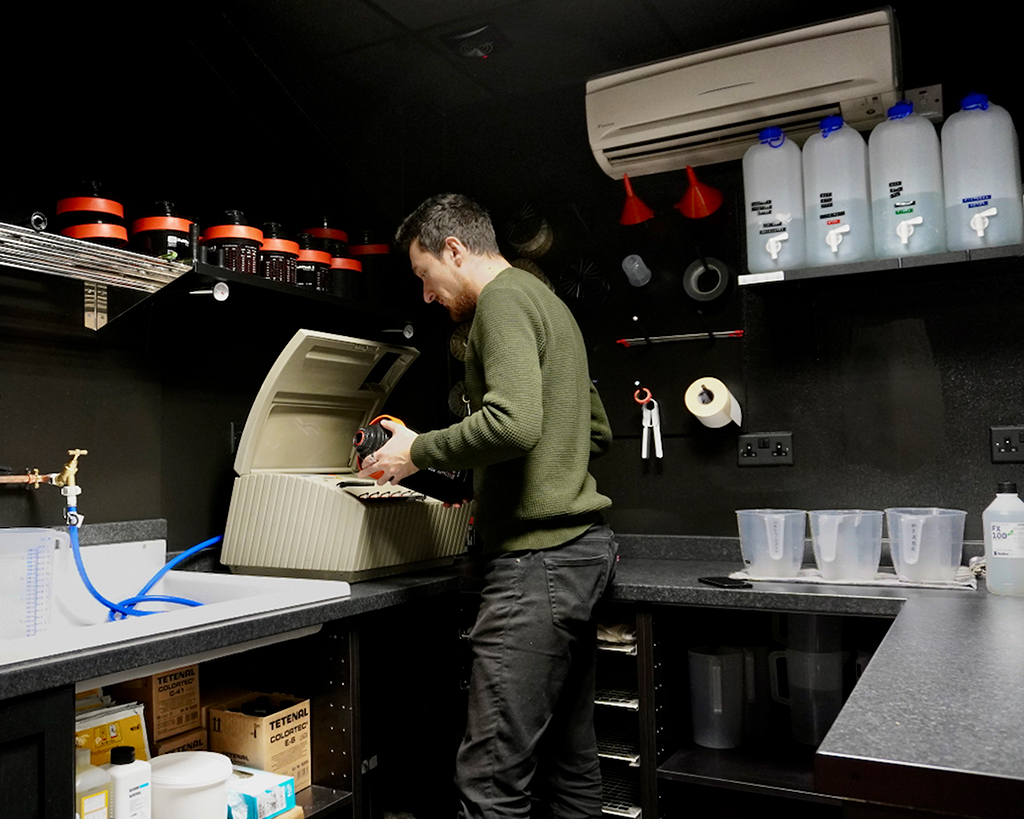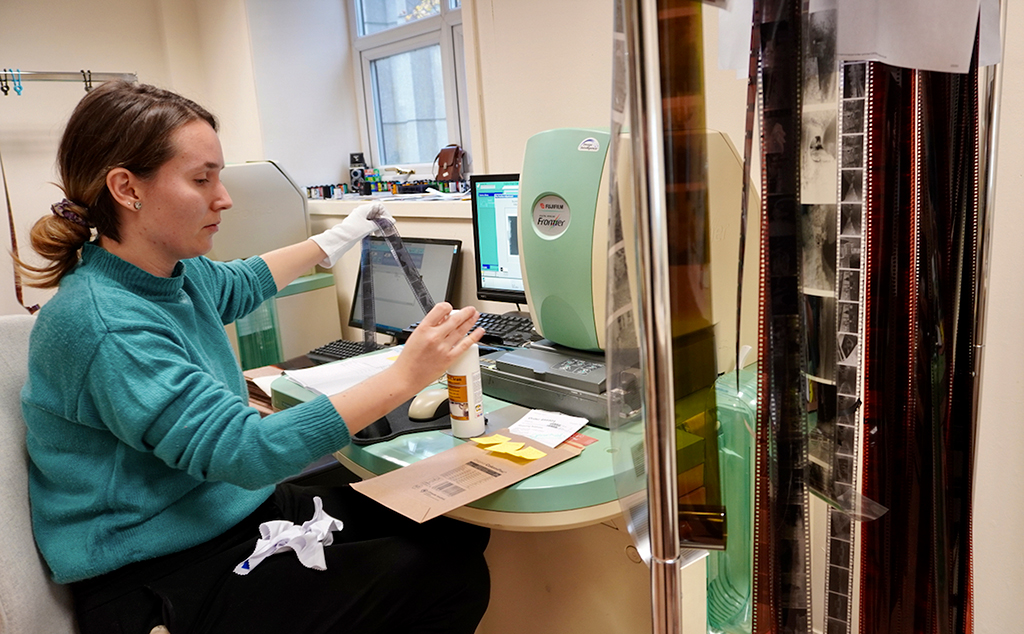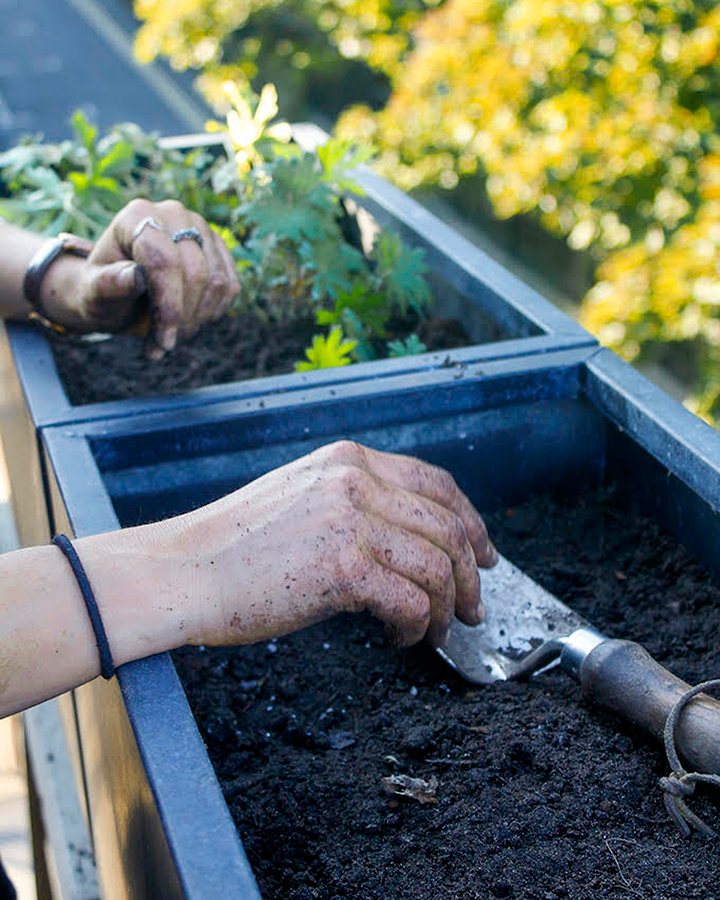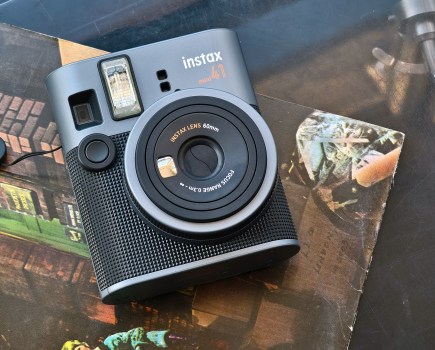Film has moved on from dodgy chemicals going down the sink. Industry experts share insights and how analogue photography can be eco-friendly with Mike Crawford
The importance of sustainable practices and ecological awareness in all walks of life has become all too apparent in recent years. The recent COP26 Climate Change Conference in Glasgow last November certainly brought more global attention to the issue, though proposed changes agreed between countries will naturally take longer to implement than what is required. Since I have spent my working life involved in analogue photography, which is reliant on base materials and chemistry, all consumers of natural resources and energy, I began to think about what environmental issues need to be considered with this work. In order to find out more, I spoke to a photographic manufacturer, a newly open processing lab and an artist working in alternative, sustainable and eco-friendly methods of production.
Eco-friendly analogue photography
Adox
Mirko Boeddecker, Director
Adox is a German photographic company producing a range of high-quality black & white films, papers, and chemistry. Its main factory, close to Berlin, opened in 2006 and in 2015 it acquired the former Ilford Imaging coating plant in Marly, Switzerland, for research and development of new products.

Adox chemist Kai Lange presenting his first product, XT-3, a high-sharpness, fine grain film developer, described as its ‘most modern and eco-friendly ascorbic acid developer’. It also uses Captura dust-binding technology, which is a registered and biodegradable invention from Adox ensuring the user does not inhale loose chemical dust when mixing
Manufacturing traditional photographic products consumes a lot of energy, but as the Adox facilities have been built to specifications to suit the size of their production, the company’s director, Mirko Boeddecker, is confident that they are doing everything possible to minimise their environmental footprint. This concern extends to the development of new products where Adox is introducing chemistry that’s termed as eco-friendly.
I recently spoke to Mirko, who explained the work the company has done on making its production more sustainable. ‘The Adox factory outside Berlin is a very good example of sustainability,’ he told me. ‘Traditional photographic manufacturers are under tremendous pressure due to oversized facilities built for greater levels of production but now needing to be scaled down. They have high heating bills and can lose a lot of energy.
We tried, using less power, to build the smallest possible production facility, using less energy, which can grow as the analogue market grows. A lot of energy is used for film coating, especially for drying, and we have been extremely careful in reducing our energy bill.
‘Our small coating machine in Switzerland is a good example of how to bring down costs and has just had an ecological upgrade,’ continued Mirko. ‘It used to have an old gas power plant using steam, but the entire plant was overhauled last summer making it operational with an electric heat pump which is far more energy-efficient.

Adox engineer working under red light on the firm’s Precipitation Machine, which uses a 35-litre kettle for small-scale production of paper and film emulsions
It now uses hydro power, so we have gone from steam to hot water for running the drying tunnel. Replacing all the heat exchangers, pipes and valves was a major investment in the range of €150,000 to make it more ecological, but I think it will be the most energy-efficient film coating facility in the world.’
Mirko also mentioned that it is not an issue that its main German plant is located in a recreational area next to a protected lake, as the factory does not produce any air, land or water pollution and any chemical waste is removed to a third-party processing plant. I did wonder how EU regulations affected the production of film and paper, not just regarding the use of energy, but on the banning of different chemicals, which has been constant in the past few decades.
‘Their regulations can be counterproductive, certainly in banning substances necessary to produce a good, stable product,’ replied Mirko. ‘Such chemicals could be dangerous if used in direct contact with skin in very large quantities, but we would only use very small amounts, so it results in a product that deteriorates quicker. This is where the EU works against us but apart from this, and concerning sustainability, EU regulations are not an issue.’
Adox has also invested in making photographic chemistry more ecologically sound. ‘We want to contribute to sustainability and to make the products as green and eco-friendly as possible, eliminating anything potentially harmful. Older products are still produced, but whenever something new is formulated, we consider what can be changed.
For example, the chelating agents in photographic chemistry, which link together different compounds and elements, were not biodegradable. However, today we can use biodegradable ones where possible. The older ones are required for some recipes, but for others we thoroughly check if it will work with green ingredients.
In the case of the FX-39 developer, we made a lot of changes.’ This has resulted in their Eco range of chemicals. ‘We have so far at least one Eco version of the main chemicals: developer, stop and fix,’ Mirko explained. ‘With the stop bath, we use citric acid instead of acetic and a water-soluble PH indicator, as well as having a biodegradable chelating agent.’
Mirko considers some differences between film and digital. ‘Analogue photography is not in itself un-ecological. Older chemistry used some toxic substances, but the amounts were extremely low. Most borderline components were eliminated from recipes years ago and modern chemistry is quite different in impact and toxicity. With digital we are always using energy, constantly charging and replacing technology on a regular basis.’
Analogue Wonderlab
Paul McKay, Director
This UK film supplier has been expanding into film development in addition to retail. In doing so, director Paul McKay sought the services of Marina Llopis, who has wide experience of working in photo labs globally. ‘This always made sense on paper but was a big commitment to add to our business. As I have never worked in a lab, we needed someone with the same values.
‘Sustainability is one of the lab’s three priorities. For example, our packaging and flyers are made from recycled cardboard as well as being recyclable, and now with the lab it is possible to make an even greater impact. On the retail side, we are reliant on what comes out and what people buy, but with the lab we have much more opportunity to make a difference in every part of the process. We acknowledge that there are still elements which we can’t say are sustainable, at least not yet.
‘We are trying to minimise our footprint by starting with the best practices. A long-term goal is how to have a developer, stop and fix with the lowest toxicity possible. If you have two developers and one is less environmentally harmful in a measurable way, moving to that one does help. That is at least step one and it’s better for everyone to make a small move than for a small number to make a dramatic change.
For example, we use Kodak Xtol which is an ascorbic-acid-based black & white developer, and is lower impact than others. We work with a company which takes away chemicals for silver recovery, though we want to bring it in house. Ed Carr, who is part of the Northern Sustainable Darkroom, has been researching small-scale silver recovery through electrolysis.
We have also been working with Hannah Fletcher and the Sustainable Darkroom on how we can push this further. She is working on the more academic side of research but when we get to the point where it could be commercially viable, we will go further.’
I was interested to hear of the collaboration with Hannah Fletcher (who is also interviewed for this article, see below), which reflects the sense of community often found in analogue photography. What changes and initiatives has Paul seen from the film companies?
‘We have a good relationship with the producers and are talking to them about how it can be made a more circular process and we reuse things like canisters and spools. ‘A lot of these problems are too big for one lab or one person to solve, so we are going to need to work together.

Process and scan by Analogue Wonderlab, based at its parent company, Analogue Wonderland in High Wycombe, Buckinghamshire. Photo: Paul McKay
The bigger companies always take longer to change direction, which is true in any industry, so it’s the smaller businesses making a difference first. Washi Film is a very good example, using as much recycled materials as possible. Some of these changes I expect will translate upwards in the future, such as Street Candy using cardboard film canisters.
There is also a movement away from disposable cameras to simple plastic point-and-shoots. Harman sells a lot of disposables, but has brought out two new simple cameras, which are still plastic, but are not disposed of after one use.’ The lab has been open since last October and the response within the film community has been very positive, keeping Marina and her team busy.
‘People have really engaged with us,’ Paul mentioned. ‘We obviously can’t say that we are 100% environmentally friendly or sustainable at the moment, but we are trying to do our best at every possible step, while investing in the future. People understand the commitment and choices we are making.’
Analogue Wonderland opens a film lab – and it’s female-led
Recycled packaging
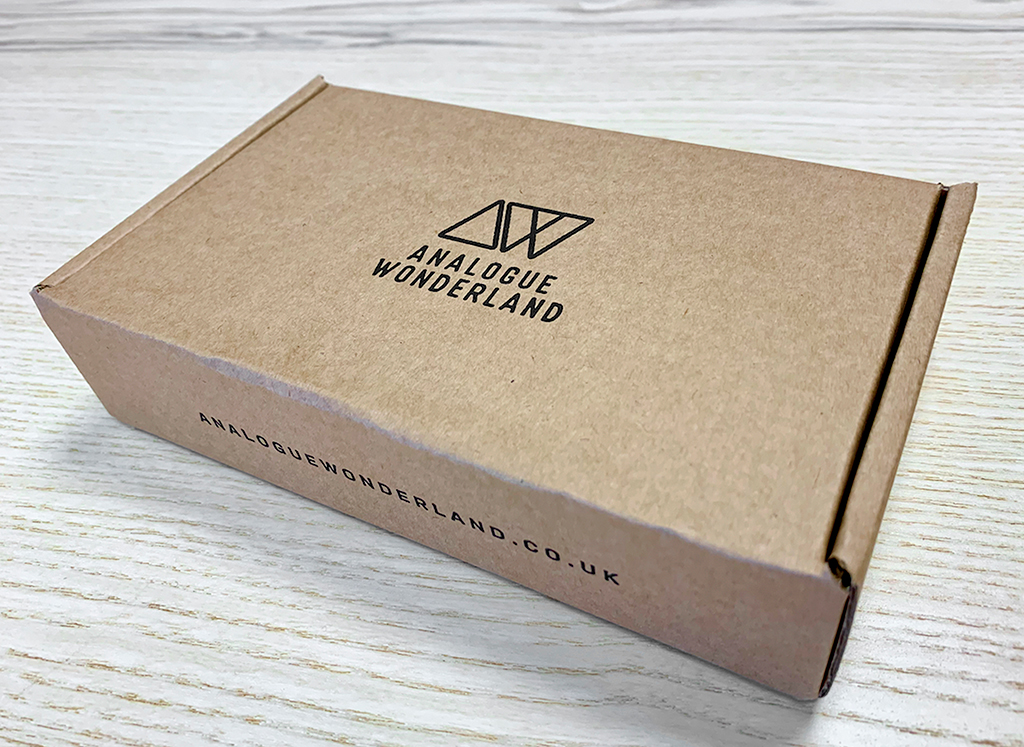
Eco-friendly deliveries. Postal boxes for both Analogue Wonderland and Wonderlab are constructed from recycled material which can be re-used ten times and designed to fit through letterboxes
Analogue Wonderland’s recycled packaging for sending out films to customers is deliberately designed to survive at least ten trips through the Royal Mail system. ‘The boxes are not just made from recycled card but are also recyclable. What we try to encourage if you have one, is to use that to send back films for processing. We can then send it back to the warehouse and use it again, with a note to let customers know why it looks a bit more battered than usual!’ says Paul McKay.
The Sustainable Darkroom
Hannah Fletcher, Founder of The Sustainable Darkroom and Artist
www.hannahfletcher.com/the-sustainable-darkroom
Manufacturers and companies in all industries are increasingly aware of the need to consider their environmental presence. But what of the individual working in analogue photography? I spoke to Hannah Fletcher, who is an artist, working primarily with cameraless photographic and alternative processes, and is the founder of the Sustainable Darkroom, an initiative created to research less-harmful practices within the medium.
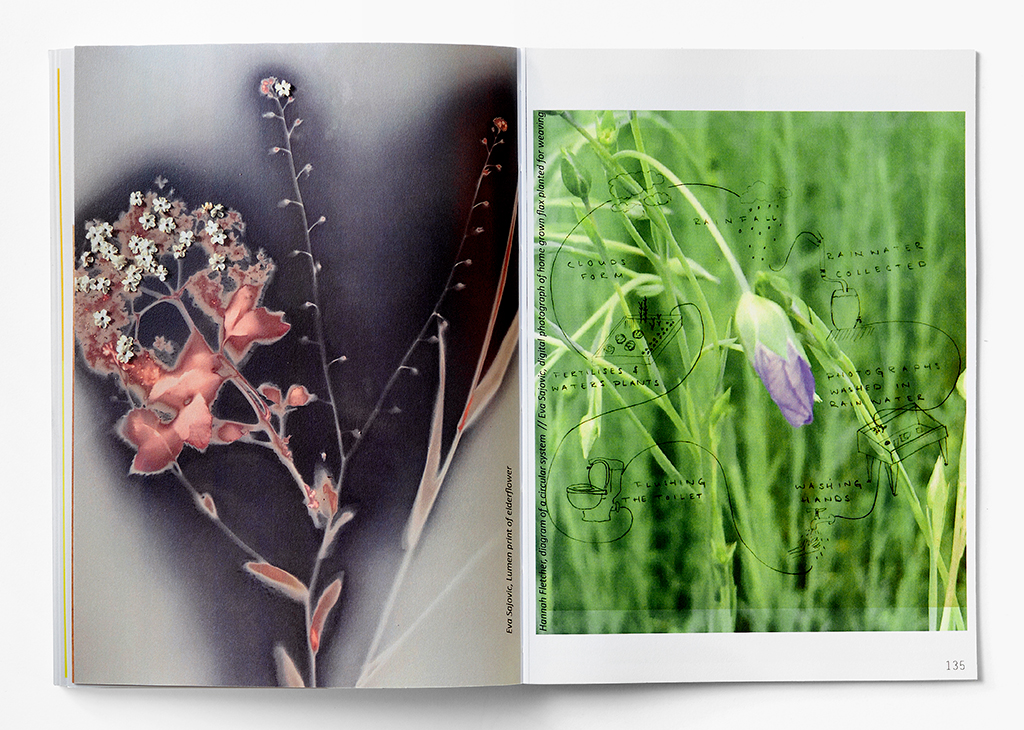
From the publication This is (Still) Not a Solution. Left: Eva Sajovic, Lumen Print. Right: Hannah Fletcher and Eva Sajovic
‘The Sustainable Darkroom is operated by a team of three: myself, Ed Carr and Alice Cazenave. We see it as an ethos, a way of approaching and understanding photography within the wider photographic industry,’ Hannah told me. ‘Because of the name, some assume it is a physical space, but it is more than that.
It is a way for practitioners to consider their materials and processes and how to make them more environmentally friendly.’ I wondered if it was best described as a collective, network or platform. ‘It’s a combination of all these,’ she replied. ‘Any research, which contributes to the ethos of the Sustainable Darkroom, should be built upon and distributed. We gain more when this knowledge is shared.’
This is partly achieved through self-published books, which highlight research work with examples and essays by different practitioners. ‘There have been two publications,’ confirmed Hannah. ‘This is Not a Solution in 2019 and This is (Still) Not a Solution in 2020, and both have been reprinted after initial print runs sold out.
We have approached them as resource documents rather than a showcase of photographic work. Of course, we want them to be visually interesting and demonstrate some of the amazing work individuals have created, but it is important that they function as informational resources.’
In her introduction to This is (Still) Not a Solution, Hannah mentions that the use of the word ‘sustainable’ can be problematic. ‘The reason for this, and the fact it is in our name, is that it is used by big companies for greenwashing. It is important to recognise small changes, but there needs to be an overall cultural understanding of how we approach artistic practices.
For a long time, we’ve been taught that art has no boundaries, nothing should come in the way of its production or the material cost, instead just find a way to make the work. But we have to consider so much more if we are going to be using the word sustainable.’
Among the work undertaken and researched are alternative, organic plant-based emulsions and developers, efficiency in print washing and silver recovery. ‘We are also researching alternatives to plastic, such as Kombucha Scoby. The Scoby is an acronym of “symbiotic culture of bacteria and yeast”, and a byproduct of Kombucha, a popular fermented health drink.
It can be harvested, dried and used instead of leather and plastic. Being absorbent, chemistry adheres to it and once dried can be re-wetted. Cyanotype chemistry works very well with it, while Micheala Davidova has applied silver nitrate to it without using gelatin. Another artist, Myka Baum, uses it with natural dyes like beetroot.’
Our conversation turned to the reliance and relevance of digital practice, particularly within the collective’s work. ‘As an organisation, we work online so we need to use digital, but we do consider which video platform we use, what powers our lights and whether there is some control over the energy used.
We don’t necessarily see a distinction between analogue and digital and many of our artists use both mediums. Felix Loftus is a digital practitioner and part of our Garden Residency. He is a computational artist following low-tech principles such as building a camera powered by solar and wind containing bio sensors that respond to the movements of plants.’
Residencies are an important part of the Sustainable Darkroom’s network, offering artists from different disciplines the opportunity to work on individual projects. ‘Charlotte Padgham is a jeweller and visual artist, who on a previous residency reused waste materials from other workshops,’ mentioned Hannah.
‘She used electrolysis to conduct the silver from the fixer onto sculptures previously made, again with electrolysis, from discarded resin-coated papers with really beautiful results. It is amazing that even within this small network and community, we have already found ways to build different circular systems so that waste materials from one artist can become valuable to another. That is something we can keep building on.’
The Photographic Garden Residency
The Photographic Garden Residency is a research and development project located at East Street Arts, Leeds. It’s also home to Northern Sustainable Darkroom, a facility using sustainable alternatives and part of the wider Sustainable Darkroom. The residency and garden is funded by Genesis Kickstarter Foundation.
It supports eight artists, (selected from over 100 applicants), who are researching how the garden can be interlinked with the darkroom. ‘We thought it was important to run for a whole year through to next September because of the garden’s seasons,’ confirmed Hannah. ‘This is all-new research, covering such topics as how changes in the stage of the lunar cycle affect plants and their potency as a developer, or how different plants can be used as water-filtration systems.’
Related Articles:
How to maintain your film camera
Repairing your treasured camera equipment

